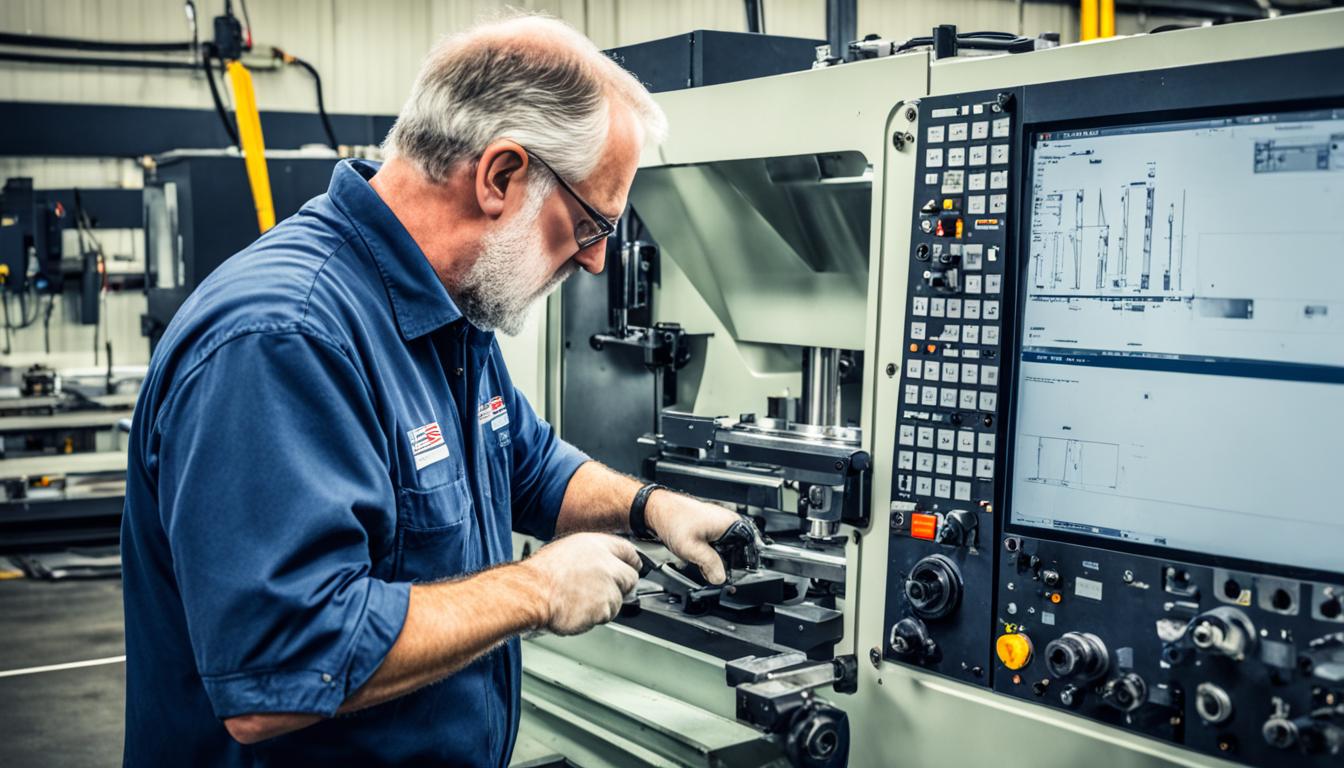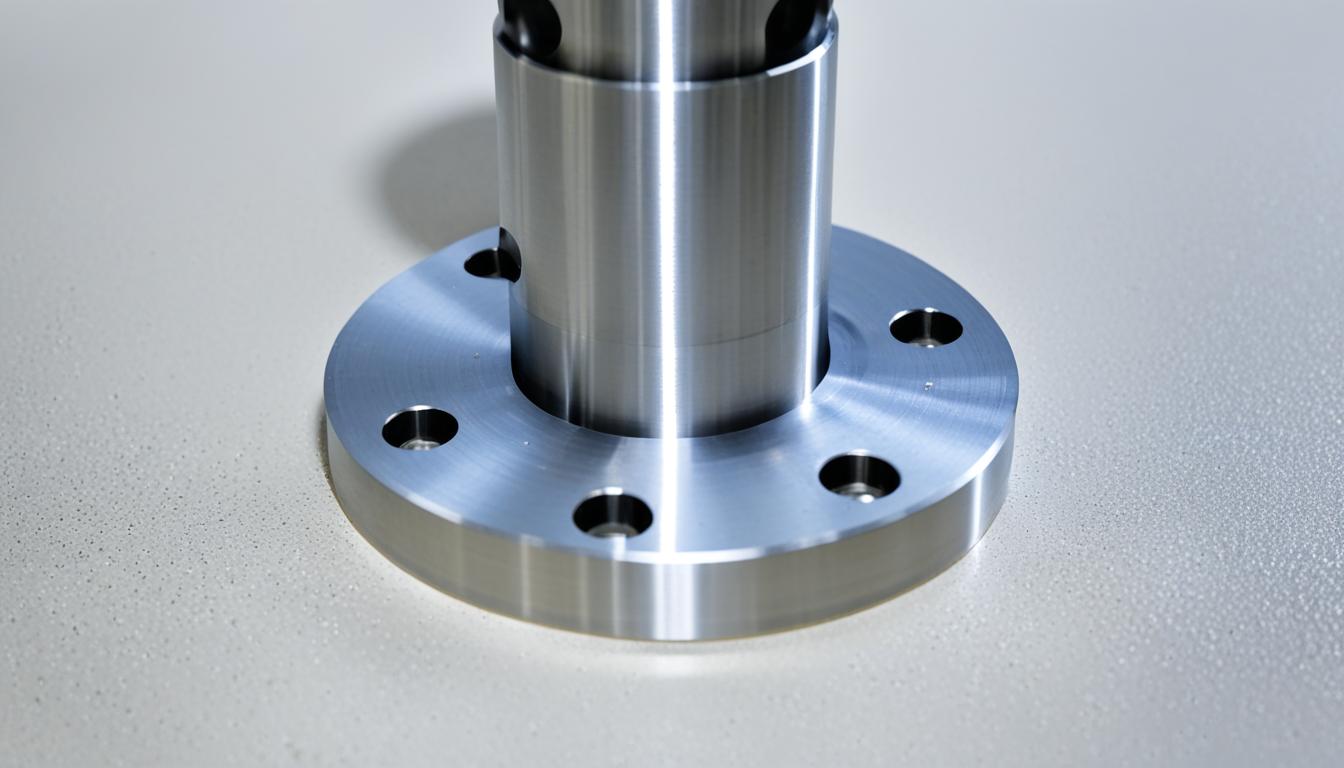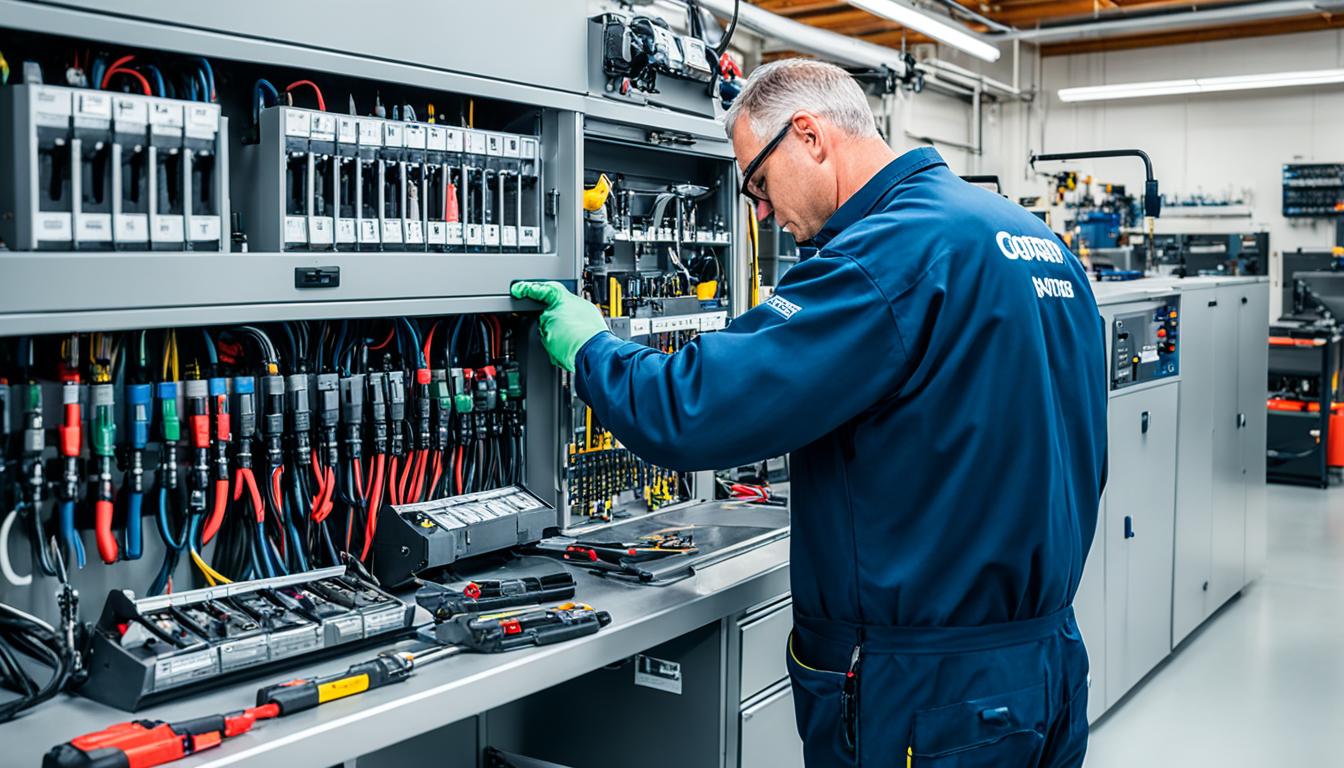To extend your CNC machine’s life, implement these five simple maintenance tips: regularly clean and lubricate the machine, focusing on removing debris and applying appropriate lubricants to moving parts; perform routine inspections to catch potential issues early, checking for wear, loose components, and unusual noises; maintain proper coolant levels and quality, ensuring the coolant is clean and at the correct concentration; keep tools sharp and in good condition, replacing or sharpening them as needed to prevent unnecessary strain on the machine; and update and back up your CNC software regularly, protecting against data loss and ensuring optimal performance.
By consistently following these practices, you can significantly increase your CNC machine’s lifespan, improve its accuracy, reduce downtime, and maintain high-quality output. These preventative measures not only save money on repairs and replacements but also enhance overall productivity and efficiency in your manufacturing process.
- Regularly clean and lubricate all parts of your CNC machine to prevent debris build-up and premature wear.
- Follow a routine maintenance schedule recommended by the machine’s manual.
- Maintain accurate maintenance records to track the history and plan future maintenance effectively.
- Establish clear maintenance procedures and encourage communication to address machine problems promptly.
- Maintain a spare parts inventory to minimize downtime and ensure quick repairs.
Keep CNC Machines Clean
Proper cleaning and maintenance of CNC machines are essential for ensuring their optimal performance and longevity. Regularly cleaning and lubricating all the parts of your CNC machine, such as windows, cutters, spindles, and tool holders, is crucial to prevent debris build-up and premature wear. By keeping your CNC machine clean, you can minimize the risk of downtime and expensive repairs, ultimately prolonging the life of your machine.
Develop a Routine Maintenance Schedule
To ensure the longevity and optimal performance of your CNC machine, it is crucial to establish a routine maintenance schedule. This schedule should include regular tasks such as cleaning, lubrication, part replacement, and alignment checks. By following a consistent maintenance schedule, you can prevent breakdowns, reduce downtime, and extend the lifespan of your CNC machine.
Why Routine Maintenance is Important for CNC Machines
Regular maintenance is essential for CNC machines to operate at their best. Over time, dirt, debris, and wear can affect the machine’s performance and accuracy. By implementing a routine maintenance schedule, you can identify and address potential issues before they escalate, minimizing unplanned downtime and costly repairs.
A routine maintenance schedule helps in:
- Preventing breakdowns and reducing machine downtime
- Ensuring consistent performance and accuracy
- Prolonging the lifespan of the CNC machine
- Reducing the risk of costly repairs
Creating Your Routine Maintenance Schedule
When developing a maintenance schedule for your CNC machine, refer to the machine’s manual for manufacturer recommendations and guidelines. These manuals provide specific instructions on maintenance procedures, intervals, and best practices tailored to your machine’s make and model. Adhering to the manufacturer’s guidelines will help ensure that you are performing the necessary maintenance tasks correctly and at the right intervals.
Your routine maintenance schedule should include the following tasks:
- Cleaning: Regularly clean the machine, including removing debris, dust, and coolant residue.
- Lubrication: Apply lubricant to all moving parts to reduce friction and wear. Refer to the manual for recommended lubricants and intervals.
- Part Replacement: Replace worn-out parts, such as belts, bearings, and filters, based on the manufacturer’s recommended intervals or as needed.
- Alignment Checks: Check and adjust the machine’s alignment to ensure precise and accurate machining.
By performing these maintenance tasks regularly and according to a predefined schedule, you can optimize the performance, reliability, and lifespan of your CNC machine.

| Maintenance Task | Frequency |
|---|---|
| Cleaning | Weekly |
| Lubrication | Monthly |
| Part Replacement | As recommended by manufacturer or as needed |
| Alignment Checks | Quarterly |
Maintain Accurate Maintenance Records
Accurate maintenance records are essential for effective CNC machine maintenance. By keeping detailed records of inspections, services, and any issues encountered, you can track the maintenance history of your CNC machine effectively. These records serve as a valuable resource for planning future maintenance tasks, allocating necessary resources, and making informed decisions.
When maintaining accurate maintenance records, it is important to include key information such as the date and time of each maintenance activity, the specific tasks performed, and any observations or recommendations. This documentation ensures a comprehensive record of the maintenance activities conducted on the machine, facilitating a proactive approach in addressing potential issues before they escalate.
Accurate maintenance records also allow for better analysis of the machine’s performance over time. By reviewing the records, you can identify patterns or trends that may indicate underlying issues, enabling you to take proactive measures to prevent future breakdowns and downtime.
Furthermore, having a well-documented maintenance history is valuable for auditing and compliance purposes, particularly in regulated industries. It provides evidence of your commitment to regular maintenance and adherence to industry standards, ensuring that your CNC machine operates safely and efficiently.
Benefits of Accurate Maintenance Records:
- Facilitate future maintenance planning and resource allocation
- Enable proactive identification and resolution of recurring issues
- Support analysis of machine performance over time
- Demonstrate compliance and adherence to industry standards
| Information to include in maintenance records | Importance |
|---|---|
| Date and time of maintenance activities | Ensures accurate tracking of maintenance tasks and scheduling |
| Specific tasks performed | Helps identify maintenance procedures that yield desired results |
| Observations or recommendations | Provides valuable insights for addressing underlying issues |
Establish Clear Maintenance Procedures
To ensure the smooth operation and longevity of your CNC machine, it is crucial to establish clear maintenance procedures. By implementing a well-defined work request process and encouraging operators to communicate any issues they notice, you can address machine problems promptly and prevent further breakdowns.
When operators notice unusual sounds, vibrations, or other abnormalities during machine operation, prompt reporting can prevent minor issues from escalating into more significant problems. This empowers maintenance teams to perform repairs or maintenance tasks quickly, minimizing downtime and maximizing productivity.
Clear maintenance procedures also involve creating a system for documenting and tracking maintenance requests, ensuring transparency and accountability. This allows maintenance personnel to efficiently prioritize and schedule maintenance or repairs based on the severity and impact on production.
Additionally, providing operators with training on how to identify and report potential maintenance issues can contribute to the overall effectiveness of your maintenance procedures. Proper training equips operators with the knowledge to detect early warning signs of machine problems, promoting proactive maintenance practices.
By establishing clear maintenance procedures, you create a structured framework for maintaining and addressing CNC machine issues promptly. This leads to reduced downtime, increased machine efficiency, and ultimately helps to prolong the life of your CNC machine.
Benefits of Clear Maintenance Procedures:
- Prompt reporting and resolution of machine problems
- Minimized downtime and production interruptions
- Increased machine efficiency and productivity
- Prolonged CNC machine lifespan
Implementing clear procedures for your CNC machine maintenance can significantly contribute to its long-term performance, reliability, and efficiency. By prioritizing prompt reporting, effective communication, and proper training, you can proactively address maintenance issues, optimize productivity, and extend the lifespan of your CNC machine.
Keep a Spare Parts Inventory
Minimizing downtime is essential for optimizing the performance of your CNC machine and prolonging its life. One effective way to achieve this is by maintaining a comprehensive spare parts inventory.
By keeping a stock of spare parts for your CNC machine, you can reduce repair time and avoid extended periods of equipment inactivity. This ensures that your operations remain uninterrupted, saving you valuable time and resources.
To create an efficient spare parts inventory, start by prioritizing frequently worn-out parts. Components such as belts, bearings, and seals are often subject to regular wear and tear and should be readily available to replace. Additionally, identify parts that have long manufacturing lead times due to their specialized nature or limited availability.
Below is an example of a spare parts inventory for a CNC machine:
| Part Name | Quantity in Stock |
|---|---|
| Belts | 50 |
| Bearings | 30 |
| Seals | 20 |
| Spindles | 10 |
| Electrical Boards | 5 |
By maintaining a spare parts inventory, you can ensure that essential components are readily available when needed, minimizing machine downtime and prolonging the life of your CNC machine.

Benefits of Keeping a Spare Parts Inventory:
- Minimizes machine downtime
- Reduces repair time
- Prevents extended periods of equipment inactivity
- Optimizes operational efficiency
- Saves valuable time and resources
Importance of Preventative Maintenance
Preventative maintenance plays a vital role in keeping your CNC machine running smoothly and avoiding unnecessary downtime. By implementing regular maintenance practices, you can maximize productivity and extend the lifespan of your machine. Preventative maintenance involves a series of proactive actions that help keep your CNC machine in optimal condition.
Benefits of Preventative Maintenance
- Minimizes unexpected breakdowns
- Reduces repair costs
- Increases machine efficiency
- Improves product quality
- Prolongs the lifespan of the machine
Preventative maintenance includes essential tasks such as lubrication, cleaning, following the manufacturer’s maintenance schedules, and regular inspection of machine components. These actions help prevent the accumulation of dirt, debris, and wear on critical parts, ensuring their proper functioning and minimizing the risk of unexpected failures.
Regular lubrication is crucial to prevent friction and excessive wear between moving parts. Cleaning the machine and removing debris not only improves performance but also prevents damage to delicate components. By adhering to the manufacturer’s recommended maintenance schedules, you can stay ahead of potential issues and address them before they cause significant problems.
Inspecting machine components regularly allows you to identify signs of wear, misalignment, or damage early on. This enables timely repairs or replacements, preventing further damage and reducing the risk of more severe breakdowns.
By prioritizing preventative maintenance, you can ensure that your CNC machine operates at its peak performance, delivering consistent and high-quality results. It also provides peace of mind, knowing that you have taken proactive measures to avoid costly downtime and maintain the longevity of your machine.
| Preventative Maintenance Actions | Frequency |
|---|---|
| Lubrication | Weekly |
| Cleaning | Weekly |
| Inspection of machine components | Monthly |
| Following manufacturer’s maintenance schedules | As recommended |
Common CNC Maintenance Challenges
While CNC machines are essential for efficient manufacturing operations, they are not without their maintenance challenges. Addressing these challenges is crucial to prevent machine downtime and ensure the longevity of your CNC machine. The most common maintenance challenges faced by CNC machine operators are:
- Time Constraints: With demanding production schedules, finding time for regular maintenance tasks can be a challenge. However, neglecting maintenance can result in costly breakdowns and unplanned downtime.
- Excessive Machine Vibration: Vibration can lead to premature wear and tear of machine components, affecting the overall precision and accuracy of your CNC machine.
- Overheating: High temperatures can cause damage to electrical components and result in performance issues. Proper cooling and ventilation are essential to prevent overheating.
- Software Issues: CNC machines rely heavily on software for programming and user interface. Software issues such as glitches and compatibility problems can disrupt machine operations.
- Power Supply Issues: Inconsistent power supply or electrical disturbances can have detrimental effects on CNC machines. Power surges or fluctuations can damage sensitive electronic components.
Addressing Common CNC Maintenance Challenges
To effectively address these challenges and maintain the quality of your CNC machine, consider the following strategies:
- Devote dedicated time for routine maintenance tasks, ensuring they are conducted at regular intervals.
- Monitor and analyze machine vibration levels, identifying potential causes and taking appropriate corrective measures.
- Implement proper cooling systems and ensure adequate ventilation to prevent overheating issues.
- Keep software up to date and regularly test for compatibility and functionality to minimize potential software-related problems.
- Invest in reliable power conditioning equipment to protect your CNC machine from power supply issues.
By addressing these common CNC maintenance challenges, you can ensure the smooth operation of your CNC machine, minimize downtime, and prolong its lifespan.
Tips for CNC Machine Maintenance
Proper planning and execution of CNC machine maintenance are crucial to ensure the longevity and optimal performance of your machine. By following these essential tips, you can prolong the life of your CNC machine, minimize downtime, and maximize productivity.
Maintain Thorough Maintenance Records
Keeping detailed maintenance records is key to effective CNC machine care. Record every inspection, service, and issue encountered during maintenance. These records will help track the maintenance history of your machine, plan future maintenance, and make informed decisions.
Ensure Employee Training
Well-trained operators can spot potential issues or unusual machine operations more efficiently. Train your employees on machine maintenance best practices and encourage them to communicate any abnormalities they observe. This proactive approach can help prevent breakdowns and extend the lifespan of your CNC machine.
Operate in a Clean Environment
A clean environment is crucial for the optimal functioning of your CNC machine. Regularly clean and lubricate all machine parts, including windows, cutters, spindles, and tool holders. This prevents debris build-up and premature wear, ensuring smooth and precise operations.
Watch for Anomalies in Machine Operations
Pay close attention to any unusual sounds, vibrations, or performance fluctuations in your CNC machine. These anomalies may indicate underlying issues that require immediate maintenance. Promptly addressing these problems can prevent further damage and costly repairs.
Schedule Regular Breaks
CNC machines operate under intense workloads, generating heat and placing strain on various components. To prevent overheating and excessive wear, schedule regular breaks during prolonged operation. This allows the machine to cool down and helps maintain its optimal performance.
Create Standard Operating Procedures and Checklists
Establishing clear standard operating procedures (SOPs) and checklists for maintenance tasks streamlines the maintenance process and ensures consistency. SOPs provide step-by-step guidelines, while checklists serve as a quick reference to ensure all necessary maintenance tasks are completed. These resources help improve efficiency and accuracy during CNC machine maintenance.
| Tips for CNC Machine Maintenance |
|---|
| Maintain Thorough Maintenance Records |
| Ensure Employee Training |
| Operate in a Clean Environment |
| Watch for Anomalies in Machine Operations |
| Schedule Regular Breaks |
| Create Standard Operating Procedures and Checklists |
CNC Machine Maintenance Checklists
Regular maintenance is essential for keeping your CNC machine in optimal condition. By following daily, weekly, monthly, and annual maintenance checklists, you can ensure the systematic and efficient performance of maintenance tasks. These checklists cover a range of important tasks that help prolong the life of your CNC machine and prevent unexpected breakdowns.
Daily Maintenance Checklist
- Inspect lubricant levels and top up if necessary.
- Check coolant and air pressure to ensure proper functioning.
- Clean the machine, removing any debris or accumulated dust.
- Inspect and clean the chip and coolant filters.
Weekly Maintenance Checklist
- Check the condition of tool holders and replace if worn or damaged.
- Inspect and clean the spindle and bearings.
- Calibrate machine axes for accuracy.
- Inspect and tighten any loose nuts, bolts, or screws.
Monthly Maintenance Checklist
- Inspect and lubricate the ball screws, linear guides, and other mechanical components.
- Check for abnormal machine vibrations and identify potential causes.
- Examine electrical connections and ensure they are secure.
- Perform a thorough visual inspection of the entire machine.
Annual Maintenance Checklist
- Replace worn-out components, such as belts, bearings, and seals.
- Perform a comprehensive cleaning of the entire machine.
- Calibrate and align the machine for precise and accurate operation.
- Conduct a thorough inspection of the electrical system.
By following these comprehensive maintenance checklists, you can ensure the longevity and optimal performance of your CNC machine. Stay proactive in your maintenance efforts to avoid costly repairs and minimize downtime.
| Maintenance Task | Frequency |
|---|---|
| Inspect lubricant levels and top up if necessary | Daily |
| Check coolant and air pressure | Daily |
| Clean the machine | Daily |
| Inspect and clean the chip and coolant filters | Daily |
| Check the condition of tool holders | Weekly |
| Inspect and clean the spindle and bearings | Weekly |
| Calibrate machine axes | Weekly |
| Inspect and tighten nuts, bolts, or screws | Weekly |
| Inspect and lubricate ball screws and linear guides | Monthly |
| Check for abnormal machine vibrations | Monthly |
| Examine electrical connections | Monthly |
| Perform a thorough visual inspection | Monthly |
| Replace worn-out components | Annual |
| Perform a comprehensive cleaning | Annual |
| Calibrate and align the machine | Annual |
| Inspect the electrical system | Annual |
Following these maintenance checklists will help ensure the smooth operation and prolonged life of your CNC machine, minimizing downtime and maximizing productivity.
Use CMMS Software for Effective Maintenance
To optimize the maintenance processes of your CNC machines, employing state-of-the-art Computerized Maintenance Management System (CMMS) software is essential. By utilizing CMMS software, such as Limble CMMS, you can efficiently streamline maintenance procedures, ensuring precise and effective CNC machine maintenance.
CMMS software automates data collection and analysis, providing you with valuable information about your machines’ maintenance history and overall condition. This allows you to make data-driven decisions, plan maintenance tasks in advance, and prevent unexpected breakdowns and downtime.
In addition, CMMS software helps you manage your spare parts inventory more efficiently. It enables you to track inventory levels, identify which parts are frequently used or have longer lead times, and ensure you have the necessary components available when needed, reducing repair time and increasing operational efficiency.
Implementing CMMS software into your CNC machine maintenance strategy can revolutionize your maintenance operations. With streamlined processes, better data management, and enhanced spare parts inventory management, you can extend the lifespan of your CNC machines, improve productivity, and minimize costly repairs.
